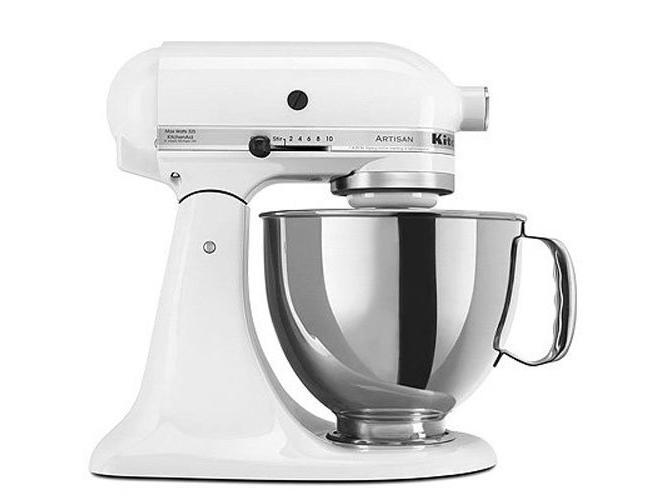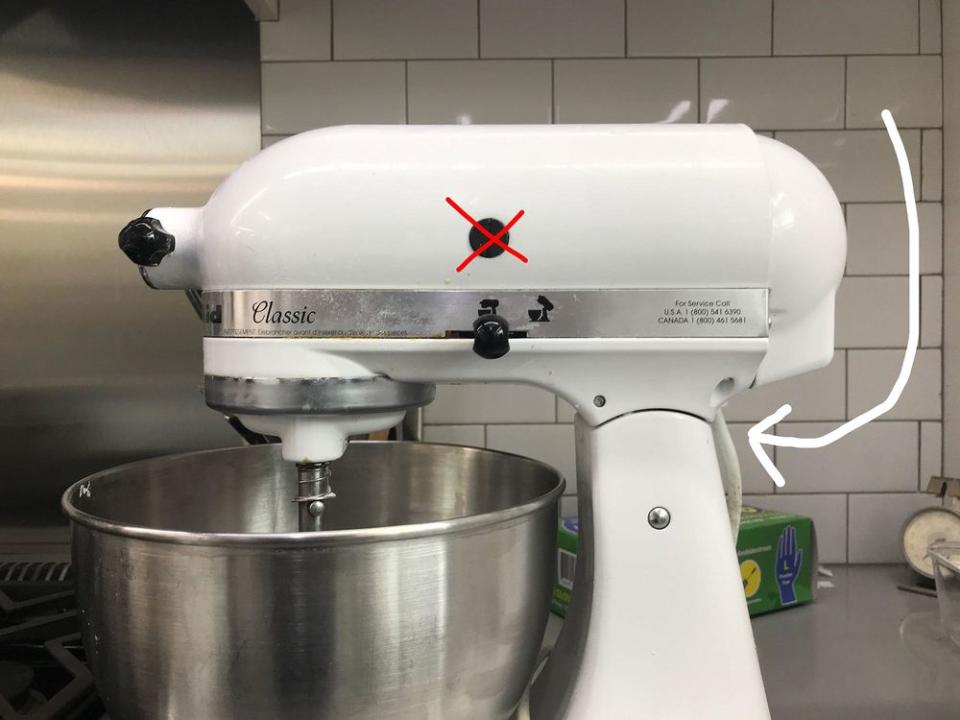This Is the Most Common KitchenAid Mixer Malfunction—And How to Fix It
KitchenAid mixers are as useful as they are beautiful—and they're supposed to last for a really long time, even if you bake fresh cookies or sheet cakes every single day. But KitchenAid acknowledges that your mixer needs maintenance every once in a while, and says that one of the most common issues that plague home bakers is misaligned mixers (basically, the tilt head needs to be adjusted). Lucky for you, they've shared easy tips for fixing the problem, which can save you from buying a brand new mixer altogether.
The kitchen retailer says there's a few telltale signs that your mixer's head needs to be adjusted: First, you'll notice that your ingredients are often left on the bottom of the mixing bowl rather than evenly distributed. Your mixer's head could also fail to lock in place when in use, or your flat beater has become chipped on the bottom (a sign that the head is too low into the bowl). Finally, if you see excessive scrape marks on the bottom of the bowl, you'll know it's time to adjust your mixer.
There's also another way to quickly check if the height on your mixer's head is the problem: KitchenAid calls it the "dime" test, and says it only works with metal-based mixing bowls (don't attempt on glass or ceramic mixing bowls).
Simply place a dime in the bowl and attach your KitchenAid flat beater before activating the low-speed stir mode—if the dime isn't moving at all, the beater is too high. If it's moving around in a continuous circular motion, that means the beater is too low. You want to see the dime move about half an inch with each pass of the beater.
If you know that your mixer's height needs to be adjusted, there's a simple procedure that involves one silver screw on your machine. KitchenAid says it's best to unplug the machine before you get started.

More essential KitchenAid tips:
On a tilt-head mixer, the screw in question can be found between the mixer's stand and the head itself (right at the crevice that is apparent when the head is tilted back).

If you own a bowl-lift mixer, the screw in question is located on the inside of the stand itself—it can be seen with the naked eye.

KitchenAid says you'll need a flat-head screwdriver to turn the screw counterclockwise to raise the head or bowl—and if you need to lower it, you'll turn it clockwise instead. The brand stresses that this screw is sensitive, so you only need a slight adjustment at a time (don't put your back into it!).

Use the dime test after you adjust to see if the head's height is at a better position. Hopefully, KitchenAid's guide will help transform what seems like a shaky mixer back into the shiny workhorse you originally bought! If not, we'd suggest keeping an eye on some of the best KitchenAid sales out there.

